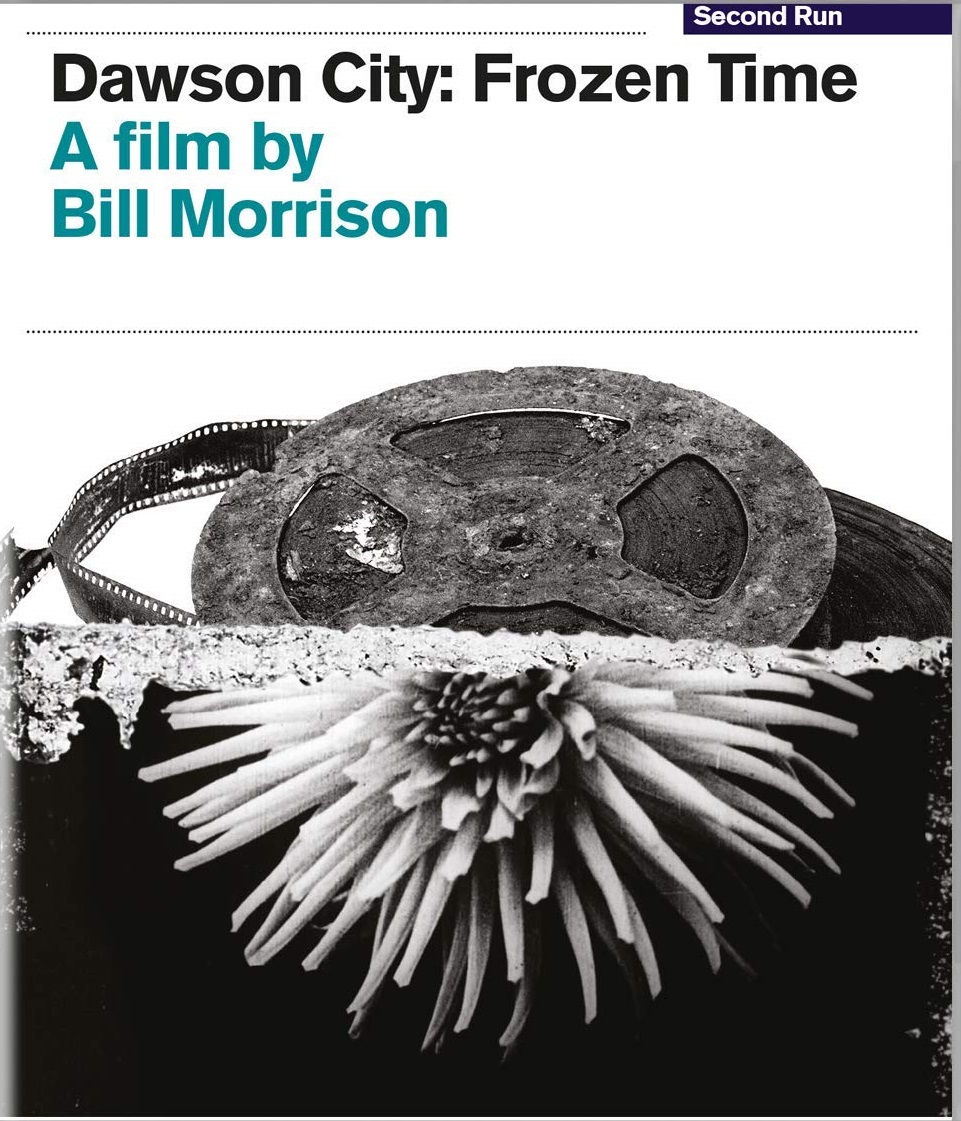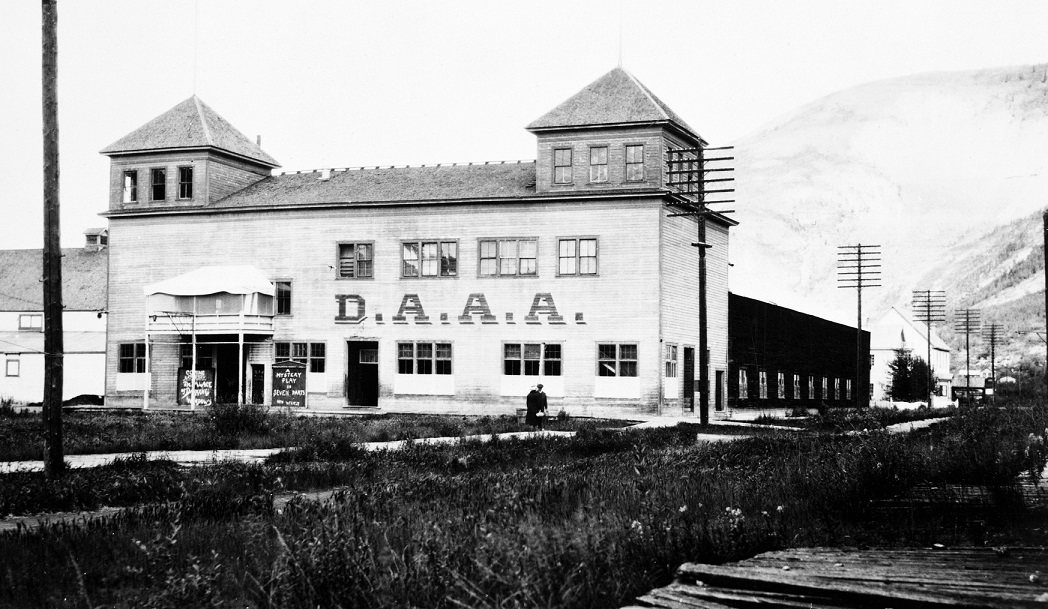Bill Morrison’s Dawson City: Frozen Time is an intoxicating cinematic collage-compilation that embraces social history – in microcosm, via its story of the titular Canadian mining town – as well as the history of film itself. But it goes further, too, to achieve something that's close to a meditation on history itself, on time, on the organic process of development and decay.
The backstory emerges in the opening scenes, how in 1978 a collection of film reels was unearthed during building work in the town. Excavated and eventually conserved – to whatever degree was possible, under the circumstances – they comprised a collection of silent film reels dating from the late 1890s through to the 1920s. The story of how they came to be there is itself an integral part of the history of the Yukon Gold Rush and this frontier town, where the first prospectors appeared in 1896: the coincidence of the discovery of gold at Dawson City with the Lumière brothers’ introduction of the moving image is central to the film’s dynamic.
 The town went through concentrated periods of boom and bust, its population dramatically expanding, then contracting as “gold fever” waxed and waned. It was a process recorded in the still photographs of Eric Hegg, who was among the first “stampeders” to arrive in the territory from the West Coast, which provide another central visual element to Morrison’s film. (The story of the rediscovery and preservation of Hegg’s archive, including his original glass plate negatives, is no less remarkable than the film archive itself, and gave rise to a technically pioneering 1957 short film The City of Gold that was a prize-winner at Cannes that year.)
The town went through concentrated periods of boom and bust, its population dramatically expanding, then contracting as “gold fever” waxed and waned. It was a process recorded in the still photographs of Eric Hegg, who was among the first “stampeders” to arrive in the territory from the West Coast, which provide another central visual element to Morrison’s film. (The story of the rediscovery and preservation of Hegg’s archive, including his original glass plate negatives, is no less remarkable than the film archive itself, and gave rise to a technically pioneering 1957 short film The City of Gold that was a prize-winner at Cannes that year.)
The interest in Dawson City: Frozen Time isn’t in mining itself, though its progression from small-scale prospecting to mass industry is there in the background, but rather in the development of the human, social environment that catered to those who worked in it. Dawson City grew up to “mine the miners”, its hotels, casinos and brothels thriving (the origin of the Trump family fortune apparently derived from an ancestor’s involvement in the last) alongside general entertainment, in the form of cinema. Film theatres sprung up almost as frequently as they burned down – the danger of nitrate film is another recurring theme – screening both early silent shorts and a varied range of newsreel and documentary fare.
The town was the end of the line on the distribution network so, with no reason to pay to send them back, the reels accumulated. It was a process that culminated in 1929 with the burial of a large collection of reels in an old swimming pool in the building (the Dawson Amateur Athletic Association, DAAA, pictured below: Palace of Darkened Windows, courtesy of Glenbow Archive) that housed one of the town’s main theatres. (The rest of the stock was either burned or thrown into the Yukon: the Dawson City Film Find may include some unique material by directors such as DW Griffith and Tod Browning, but the 550 or so prints found there were more significant for general perspective than for particular finds.) It’s a fascinating historical context in itself, but Morrison’s documentary is very much art-oriented, the state of the original material (even after restoration) dictating the “damaged” quality that is a crucial part of the selective, “fleeting experience” of watching it; there are moments when the decaying of image assumes its own aesthetic fascination. Links between material are both chronological and thematic, with a more varied kaleidoscope of connections also created: Chaplin’s 1925 The Gold Rush may be Hollywood’s most obvious engagement with the story (and it duly appears here), but several of the names encountered (like Sid Grauman, the celebrated LA cinema-owner) went on to play key roles in the future film industry.
It’s a fascinating historical context in itself, but Morrison’s documentary is very much art-oriented, the state of the original material (even after restoration) dictating the “damaged” quality that is a crucial part of the selective, “fleeting experience” of watching it; there are moments when the decaying of image assumes its own aesthetic fascination. Links between material are both chronological and thematic, with a more varied kaleidoscope of connections also created: Chaplin’s 1925 The Gold Rush may be Hollywood’s most obvious engagement with the story (and it duly appears here), but several of the names encountered (like Sid Grauman, the celebrated LA cinema-owner) went on to play key roles in the future film industry.
Such links work back and forth, the convergence of local and wider interests unexpected and revealing. Conversely Dawson City: Frozen Time looks weaker when Morrison stretches connections too far: there’s material that’s fascinating in itself on, say, the fixing of the post-war baseball World Series, or the political and social protest and unrest of the period, but it feels as if it has strayed rather far from home (and at close on two hours, the result occasionally feels protracted).
For a sense of Morrison’s approach, the interview with him, shot late last year, is revealing; other extras include his latest short film from the same material, The Letter (2018), and a filmed update to the story, Dawson City: Postscript (2017). The Blu-ray edition includes eight extracts from the Dawson City Film Find reels, ranging from Pathé newsreels to DW Griffith’s 1912 Brutality (main picture) and Tod Browning’s 1919 The Exquisite Thief. What a revelatory glimpse into the past, rich and strange indeed!
Watch the trailer for Dawson City - Frozen Time















Add comment